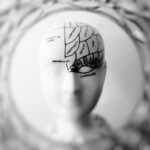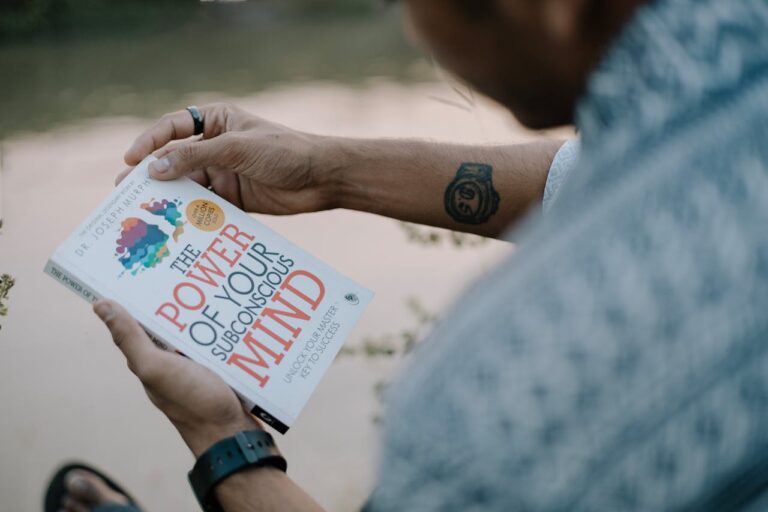Have you ever made a decision that just felt right, even though you couldn’t quite explain why? That was likely your subconscious mind at work. Quietly running in the background, it processes information, influences your thoughts, and often guides your choices without you even noticing.
Understanding the subconscious mind isn’t just fascinating—it’s a game-changer. It can help you make smarter decisions, avoid common pitfalls, and even reframe the way you approach life’s challenges.
In this blog, we’ll explore what the subconscious mind is, how it impacts your decision-making, and practical ways to harness its incredible power. Whether you’re chasing self-improvement, studying psychology, or looking for an edge in your professional life, this guide is for you.
What is the Subconscious Mind?

Definition and Key Features
The subconscious mind is like a vast storage system for all the experiences, emotions, and knowledge you’ve accumulated throughout your life. Unlike the conscious mind—which handles information you’re actively aware of—the subconscious works behind the scenes, shaping your beliefs, habits, and reflexes.
Think of it like the software running your brain’s operating system. You’re not actively aware of it, but it’s what keeps everything moving smoothly. As psychologist Carl Jung once said, “Until you make the unconscious conscious, it will direct your life, and you will call it fate.”
How It Differs from the Conscious Mind
The conscious mind is analytical and deliberate. It’s where logic, reasoning, and focused thinking happen, like when you’re solving a math problem or planning your day.
The subconscious, on the other hand, is intuitive and automatic—responsible for habits, gut feelings, and emotional reactions. It operates based on patterns and past experiences, which is both its strength and its weakness.
How the Subconscious Shapes Your Decisions
Everyday Examples of Subconscious Influence
Ever catch yourself reaching for the same brand of coffee every morning without thinking? That’s your subconscious working off habits and past choices. It also happens with bigger decisions, like feeling drawn to a particular job opportunity because it aligns with your deep-rooted values—even if you can’t articulate them.
Take, for instance, the famous example from Daniel Kahneman’s Thinking, Fast and Slow. He describes how doctors make faster, more accurate diagnoses when they rely on their intuition (a product of subconscious pattern recognition) rather than overanalyzing every symptom.
Biases and Heuristics
While the subconscious is powerful, it’s not perfect. It relies on mental shortcuts—called heuristics—which can sometimes lead to biases. For example:
- Confirmation Bias: Subconsciously seeking out information that supports your existing beliefs.
- Anchoring Bias: Giving too much weight to the first piece of information you hear, even if it’s irrelevant.
Recognizing these biases is the first step to avoiding their pitfalls.
Techniques to Harness the Subconscious Mind
Positive Visualization and Affirmations
Visualizing success is more than a feel-good exercise—it’s a technique backed by neuroscience. When you visualize a successful outcome, your subconscious starts aligning your actions to make it happen. Coupled with affirmations like “I am capable of handling challenges with confidence,” you’ll rewire your subconscious for positivity and resilience.
Mindfulness and Meditation
Practising mindfulness helps you tune into your subconscious patterns. Meditation, in particular, encourages self-awareness and creates space to evaluate how your automatic thoughts influence your decisions. A study published in Frontiers in Psychology found that mindfulness significantly reduces impulsive behaviours by strengthening the connection between the conscious and subconscious minds.
The Role of Habits
Charles Duhigg’s The Power of Habit reveals that habits are essentially subconscious routines. By identifying triggers and rewards in your habits, you can deliberately reprogram them. Want to curb procrastination? Instead of reaching for your phone when feeling overwhelmed, train yourself to take a deep breath and tackle one small task instead.
The Science Behind Subconscious Decision-Making
Neurology of the Subconscious
Research from the National Institutes of Health (NIH) shows that the subconscious processes about 11 million pieces of information per second, compared to the conscious mind’s mere 50. That’s why your brain can notice subtle patterns or risks that your conscious mind might miss entirely.
The basal ganglia, a structure deep in your brain, plays a central role here. It stores habits and automates repetitive tasks, freeing up your conscious mind for complex problem-solving.
Theories and Studies
Kahneman’s dual-process theory explains decision-making through two systems:
- System 1: Fast, intuitive, and subconscious.
- System 2: Slow, deliberate, and conscious.
Most of our day-to-day decisions rely on System 1 because it’s efficient. But when used effectively, both systems working together can lead to more informed and balanced choices.
Practical Applications and Benefits
Smarter Decision Making
Understanding your subconscious helps you balance intuition with rational thought. For example, trusting your gut in hiring decisions is valid—but cross-check it with data to avoid biases.
Leveraging Subconscious Power for Personal Growth
Prominent self-improvement authors like Napoleon Hill and Louise Hay emphasize the importance of programming the subconscious for success. Simple actions, like writing “I am focused and successful” every morning, can reinforce positive beliefs and behaviours.
Real-Life Benefits
- Career Growth: Professionals who meditate and visualize success often report improved focus and confidence.
- Stronger Relationships: Being aware of your subconscious triggers makes you more empathetic in handling conflicts.
- Improved Health: Mind-body exercises like yoga tap into the subconscious to lower stress and promote wellness.
Use Your Subconscious to Shape a Better Future
The power of the subconscious is both awe-inspiring and practical. By tuning into it, you gain a deeper understanding of yourself, avoid biases, and make decisions that align with your true values and goals.
Start by incorporating mindful habits, practising visualization, and reflecting on the subconscious triggers behind your actions. The more intentional you are, the more influence you’ll have over the direction of your life.
What’s something your subconscious has led you to lately? Share your insights in the comments below! And if you’re ready to explore this topic further, check out some of the resources we’ve mentioned to take your self-improvement game to the next level. Remember, harnessing your subconscious is an ongoing practice, so be patient and kind to yourself on this journey. Your future self will thank you for it. Keep learning and growing! #UnlockthePowerofYourSubconscious #SelfImprovement #PersonalGrowth
Additional Tips for Harnessing the Power of Your Subconscious Mind
- Trust your intuition: As mentioned earlier, our subconscious mind processes a vast amount of information and can often pick up on subtle cues that our conscious mind may miss. Learn to trust your gut instincts and use them as a valuable tool in decision-making.
- Reflect on past experiences: Our subconscious mind also holds onto past experiences and patterns
Meta Information
Meta Title
The Power of the Subconscious Mind in Decision-Making
Meta Description
Learn how the subconscious mind influences decisions and discover techniques like visualization and mindfulness to harness their full potential!





















0 Comments